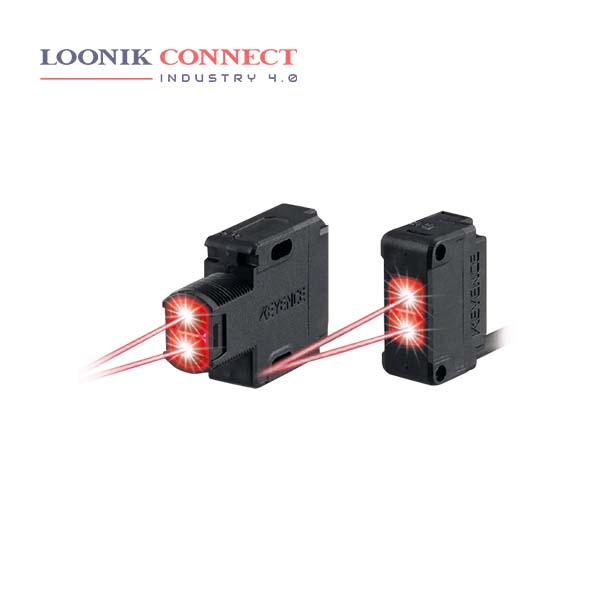Laser sensors are used for detecting presence based on position or light intensity. Benefits include long range, a visible beam spot, and precise detection. These devices have a small footprint and have options to withstand the most demanding environments. A Photoelectric Sensor consists primarily of an Emitter for emitting light and a Receiver for receiving light. When emitted light is interrupted or reflected by the sensing object, it changes the amount of light that arrives at the Receiver. The Receiver detects this change and converts it to an electrical output.
There are three major types of photoelectric sensors: thru-beam, retroreflective, and diffused. Each sensor has its own strengths and can be used in a variety of ways. The sensor emits a laser beam to a target and receives the reflected light. Based on the change in the position where the light is received (light entry angle), the sensor can detect the change in the distance to the target (height or position of the target).
Most of the photoelectric sensors emit a beam which is pulse-modulated. In this method, a strong optical signal of fixed width is emitted at a fixed time interval. This helps the receiver to distinguish the signal from extraneous light and to achieve a long sensing range. Detects all kinds of materials(can detect any object, including glass, plastic, wood, or liquid). Fast response time. It is a cheaper sensor. Diffuse photoelectric sensor detects small objects including color mark and label detection.










